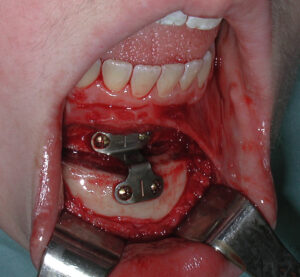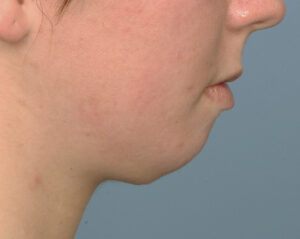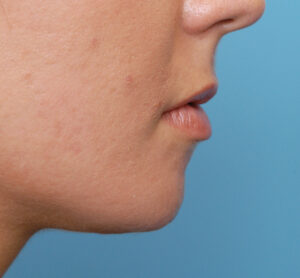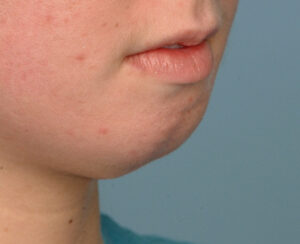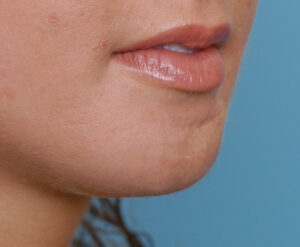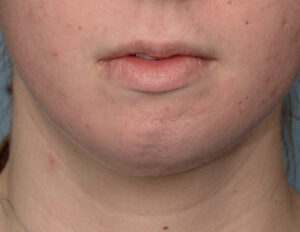Background: Chin implants come in a wide variety of styles, sizes and materials. Much is made of the implant material by some surgeons and patients based on the perception that the materials create significantly different biologic behaviors. And while there are some tissue adhesion differences between the materials, the biologic response of any material is really secondary to its capability of creating the desired aesthetic result.
Of the chin implant materials that create tissue bonding, the use of mersilene mesh allows for the most extensive tissue ingrowth. Mersilene mesh is not really an FDA-approved chin implant material but an off-label use of a hernia mesh repair product. Surgeons suture together layers of the mesh material together to create a certain thickness and shape. This mesh construct when implanted allows for tissue ingrowth deep into the material because it is truly porous due to the mesh interstices.
Mersilene mesh chin implants can be effective when the augmentation needs are modest and not three-dimensional. But when greater multidimensional chin augmentation requirements its aesthetic limitations become more apparent.
Case Study: This female had a prior history of a primary chin augmentation using a mersilene mesh implant. The result offered little improvement as it appeared that the implant was sitting high on the severely angled chin bone. She now presented for a sliding genioplasty for a more significant improvement.
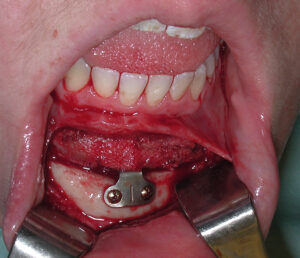
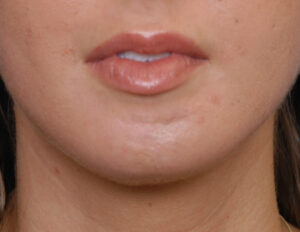
The tissue ingrowth of the mersilene mesh material allows it to be used an an ‘autoallograft’ since after a period os implantation it is a mixture of both implant materials and the patient’s fibrovascular tissue
Case Highlights:
1) In more significant chin augmentations mesh style chin implants will create an inadequate horizontal projection.
2) Mesh chin implants can be replaced by a sliding genioplasty for a more effective result in both horizontal and transverse dimensions.
3) The mesh implant can be recycled as a composite tissue graft for the bony step off of the sliding genioplasty.
Dr. Barry Eppley
Indianapolis, Indiana




